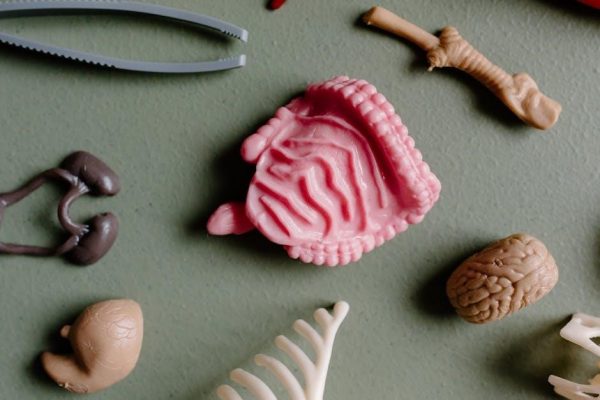A cutting workout plan is a strategic approach to reducing body fat while maintaining muscle mass. It combines targeted exercises and nutrition for optimal results. Download the PDF to explore routines and tips for success.
1.1 What is a Cutting Workout Plan?
A cutting workout plan is a structured fitness regimen designed to help individuals reduce body fat while preserving muscle mass. It typically involves a combination of resistance training, cardiovascular exercises, and a calorie-controlled diet. The primary goal is to achieve a leaner physique by creating a caloric deficit, which promotes fat loss. This plan is often used by athletes or bodybuilders during the “cutting phase” to enhance muscle definition. The approach focuses on maintaining muscle integrity through proper nutrition and targeted workouts. By balancing intensity and recovery, individuals can effectively shed fat without compromising their hard-earned muscle. A well-designed cutting plan also incorporates progressive overload to ensure continued muscle growth and strength. Download a sample plan for a detailed guide.
1.2 Importance of a Cutting Phase in Fitness
The cutting phase is a crucial component of fitness journeys, particularly for athletes and bodybuilders, as it enables the reduction of body fat while maintaining muscle mass. This phase is essential for revealing muscle definition and achieving a lean, aesthetic physique. Beyond physical transformation, the cutting phase also enhances mental discipline and focus. It teaches individuals how to manage their nutrition and training effectively, fostering a deeper understanding of their bodies. By prioritizing muscle preservation, the cutting phase ensures that hard-earned muscle is not lost during fat loss. This makes it a vital step for those aiming to compete or simply achieve a more defined appearance. Learn more about how to incorporate this phase into your fitness plan.

Understanding the Basics of Cutting
Cutting involves reducing body fat while preserving muscle mass, focusing on structured workouts and nutrition. It’s essential for achieving a lean, defined physique. Download the guide.

2.1 Definition and Goals of Cutting
Cutting is a fitness phase focused on reducing body fat while maintaining muscle mass. The primary goal is to achieve a lean, defined physique by creating a calorie deficit through diet and exercise. It involves precise nutrition planning, increased protein intake, and targeted workouts to preserve muscle tissue. The cutting phase is often undertaken after a bulking period to enhance muscle definition. Success in cutting requires discipline, consistency, and careful monitoring of progress. By combining resistance training with cardiovascular exercises, individuals can effectively burn fat while maintaining strength and muscle mass. This phase is popular among athletes and bodybuilders aiming to showcase their muscle definition during competitions or for personal aesthetic goals. Download the PDF for detailed guidance.
2.2 Differences Between Cutting and Bulking
Cutting and bulking are two distinct fitness phases with opposite goals. Bulking focuses on gaining muscle mass through a caloric surplus, often resulting in increased body fat. In contrast, cutting aims to reduce body fat while preserving muscle mass, achieved through a caloric deficit. During bulking, the emphasis is on heavy resistance training and high protein intake to build muscle. Cutting, however, incorporates both resistance training and cardiovascular exercises to enhance fat loss. While bulking is typically longer in duration, cutting phases are shorter to avoid excessive muscle loss. Understanding these differences is crucial for tailoring a workout plan to specific goals. Download the PDF for a detailed comparison and guidance.

Diet and Nutrition for Cutting
A well-structured diet is essential for cutting, focusing on a caloric deficit while maintaining high protein intake to preserve muscle mass. Carbohydrates and fats provide energy. Download the PDF for detailed nutrition strategies.
3.1 Caloric Intake and Deficit
A cutting phase requires creating a caloric deficit to lose fat while preserving muscle. Calculate maintenance calories and reduce intake by 500-750 calories daily. Use a calorie calculator for accuracy. Ensure the deficit is gradual to avoid muscle loss. Track food intake with apps or journals to stay consistent. Adjust the deficit weekly based on progress. Proper hydration and meal timing are crucial. Combine this with resistance training for optimal fat loss. Download the PDF for detailed guidance on setting up your caloric intake and deficit effectively.
3.2 Macronutrient Breakdown: Protein, Carbs, and Fats
Balancing macronutrients is key during a cutting phase; Protein should be prioritized at 1.6-2.2g per kilogram of body weight to maintain muscle. Carbohydrates provide energy for workouts, aiming for 40-50% of total calories, focusing on complex carbs. Fats are essential for hormone function, making up 20-30% of calories, with an emphasis on healthy fats like avocados and nuts. Fiber intake should also be considered to support digestion. Adjusting macronutrient ratios based on progress and goals is crucial. Proper hydration is equally important to avoid muscle cramps and fatigue. Download the PDF for a detailed macronutrient breakdown tailored to your cutting phase.

Training Plan for Cutting
A cutting training plan focuses on resistance exercises to maintain muscle and cardiovascular workouts to enhance fat loss. Download the PDF for structured routines.
4.1 Resistance Training: Building and Maintaining Muscle
Resistance training is a cornerstone of a cutting workout plan, focusing on preserving muscle mass while promoting fat loss. It involves using weights, resistance bands, or bodyweight exercises to stimulate muscle growth and maintain strength. Compound movements like squats, deadlifts, and bench presses are essential for engaging multiple muscle groups. A well-structured resistance program ensures muscle retention, even in a caloric deficit. Aim for 4-5 resistance sessions per week, targeting each major muscle group. Incorporate progressive overload by increasing weights or reps over time to challenge muscles. Rest periods between sets should be minimized to enhance metabolic stress. Proper form and recovery are critical to avoid injury and maintain performance. Download the PDF guide for detailed routines.
4.2 Cardiovascular Exercise: Enhancing Fat Loss
Cardiovascular exercise plays a key role in accelerating fat loss during a cutting phase. Activities like running, cycling, or swimming increase heart rate, boosting metabolism and burning calories. Incorporating 20-30 minutes of moderate-intensity cardio, 3-4 times weekly, complements resistance training. High-Intensity Interval Training (HIIT) is particularly effective, as it maximizes fat burning in shorter sessions. Consistency in cardio routines enhances metabolic efficiency, aiding in sustained fat loss. Balancing cardio with strength training ensures muscle preservation. For a detailed plan, download the cutting workout plan PDF.

Supplements for Cutting
Supplements like protein powder, creatine, and BCAAs support muscle retention and fat loss. Fat burners containing caffeine or green tea extract can enhance metabolism. Download the PDF for more details.
5.1 Popular Supplements for Fat Loss
When following a cutting workout plan, certain supplements can enhance fat loss while preserving muscle. Protein powder helps maintain muscle mass, while creatine boosts strength during workouts. BCAAs (branched-chain amino acids) support recovery and muscle retention. Green tea extract and caffeine are popular for their metabolism-boosting properties. Additionally, CLA (conjugated linoleic acid) is often used to aid in fat reduction. These supplements can be combined to optimize results, but it’s important to consult a healthcare professional before starting any regimen. For a detailed guide on supplement timing and dosages, download the PDF.
5.2 How to Choose the Right Supplements
Selecting the right supplements for your cutting phase involves understanding your goals and body composition. Protein powder is essential for muscle preservation, while creatine enhances strength and endurance. For fat loss, consider green tea extract or caffeine to boost metabolism. Always choose supplements with scientifically backed ingredients and read labels carefully. Avoid excessive stimulants and opt for natural alternatives when possible. Consulting with a nutritionist or trainer can help tailor your choices to your specific needs. Additionally, ensure supplements align with your caloric deficit and training regimen. For a comprehensive guide on supplement selection, download the PDF to maximize your cutting results effectively.

Progress Tracking and Adjustments
Track your progress by monitoring weight, body fat percentage, and physical changes. Adjust your workout and diet based on results to optimize fat loss and muscle retention. Download the PDF for detailed guidance.
6.1 Monitoring Weight and Body Fat Percentage
Regularly tracking weight and body fat percentage is crucial during a cutting phase. Use a reliable scale and consider weekly measurements to gauge progress.
- Weight fluctuations may occur due to water retention or glycogen levels.
- Body fat calipers provide a more accurate measure of fat loss.
Consistency in tracking helps identify patterns and ensures adjustments align with goals; For detailed guidance, download the PDF.
6.2 Adjusting the Workout Plan Based on Results
Regularly assessing progress allows for timely adjustments to your cutting workout plan. If weight loss stalls, consider increasing cardio intensity or reducing caloric intake slightly.
- Adjust resistance training volume or intensity to maintain muscle engagement.
- Incorporate deload weeks to avoid plateaus and prevent overtraining.
- Monitor strength levels; if lifting performance drops, it may indicate the need for a nutrition or rest adjustment.
Consistency is key, but flexibility ensures sustained progress toward your fat-loss and muscle-retention goals. For detailed guidance, download the PDF.

Sample Cutting Workout Plan PDF
The sample PDF provides a structured 4-day split routine, detailing exercises, sets, and reps. It includes nutrition tips and progressive overload strategies for effective fat loss. Download here.
7.1 Overview of a Typical 4-Day Split Routine
A typical 4-day split routine for cutting focuses on balancing resistance training and cardio. Day 1 targets chest and triceps, Day 2 focuses on back and shoulders, Day 3 on legs, and Day 4 on arms and abs. Each session includes compound movements like bench presses, pull-ups, and squats to maintain muscle mass. Cardio sessions, such as HIIT or steady-state, are incorporated to enhance fat loss. The routine emphasizes progressive overload to sustain muscle growth while in a caloric deficit. Nutrition tips are also provided to support the workout plan, ensuring optimal results. This structured approach helps individuals stay consistent and achieve their cutting goals effectively; Download the full plan for detailed exercises and schedules.
7.2 Example Exercises and Sets for Each Day
A typical 4-day cutting plan includes specific exercises to target each muscle group. Day 1 (chest and triceps) might include bench presses (4 sets of 8-12 reps), incline dumbbell presses (3 sets of 10-15 reps), and tricep pushdowns (3 sets of 12-15 reps). Day 2 (back and shoulders) could feature pull-ups (4 sets of 8-12 reps), deadlifts (4 sets of 6-8 reps), and lateral raises (3 sets of 12-15 reps). Day 3 (legs) includes squats (5 sets of 8-10 reps), lunges (3 sets of 10-12 reps per leg), and leg curls (3 sets of 12-15 reps). Day 4 (arms and abs) involves bicep curls (4 sets of 10-12 reps) and bench dips (3 sets of 12-15 reps), along with planks (3 sets of 30-60 seconds). This structure ensures balanced muscle engagement while promoting fat loss. Download the PDF for full details.

Avoiding Common Mistakes During Cutting
Common mistakes during cutting include overtraining, inadequate nutrition, and insufficient recovery. These errors can hinder progress and lead to muscle loss or burnout. Learn More.
8.1 Overtraining and Recovery
Overtraining is a common pitfall during cutting, leading to fatigue, decreased performance, and muscle loss. It occurs when the body is pushed beyond its recovery capacity.
Signs include persistent muscle soreness, lack of progress, and mental exhaustion. Adequate recovery is crucial to maintain muscle mass and overall health.
Incorporate rest days, ensure sufficient sleep, and prioritize low-intensity activities like stretching or yoga to aid recovery.
Neglecting recovery can derail progress, making it essential to balance intense workouts with proper downtime.
For more tips, download the PDF guide to optimize your cutting phase.
8.2 Maintaining Muscle Mass While Losing Fat
Maintaining muscle mass during a cutting phase is crucial for achieving a lean, sculpted physique. This requires a delicate balance between calorie deficit and sufficient protein intake.
Resistance training plays a key role, as it signals to your body to preserve muscle tissue even when in a caloric deficit. Ensure your workout plan includes compound movements like squats, deadlifts, and bench presses.

Additionally, consume enough protein (1.2–2.2 grams per kilogram of body weight) to support muscle repair and growth. Stay hydrated and prioritize sleep for optimal recovery.
For detailed strategies, download the PDF guide to master maintaining muscle mass while cutting effectively.




